Slow to Change: Diversity at the 20 Biggest Apparel Companies Crawls Forward

By now, the notorious black squares of 2020 are a distant memory for many, but for those who represent diversity, it’s not a conversation or situation that can ever be forgotten.
As the industry reaches two years since its promises and pledges to improve on inclusion, WWD is checking in with the 20 most valuable fashion brands, according to Brand Finance’s U.S. 500 2022 ranking.
More from WWD
Across most of the 20 companies that provided updates, racial representation did tick up a few percentage points in terms of adding people of color to their ranks, which is a rate many chief diversity officers expected when they mapped out plans for progress in 2020.
Climbing 31 spots up the valuation charts, Foot Locker joined the top 20 ranks this year, and the company said it’s been steady on efforts to improve diversity internally, as well as create opportunities for underrepresented groups.
“As we come on the second year, it’s a lot easier to make the pledge than it is to do the work,” Patrick Walsh, the company’s senior vice president of growth and commercial development, told WWD, admitting to what many in the industry will recognize as true. However, things are moving in the right direction at Foot Locker, he said. “I am absolutely excited at the fact that we have done the work.”
Here, a look at who’s done what since last year.
WALMART INC.
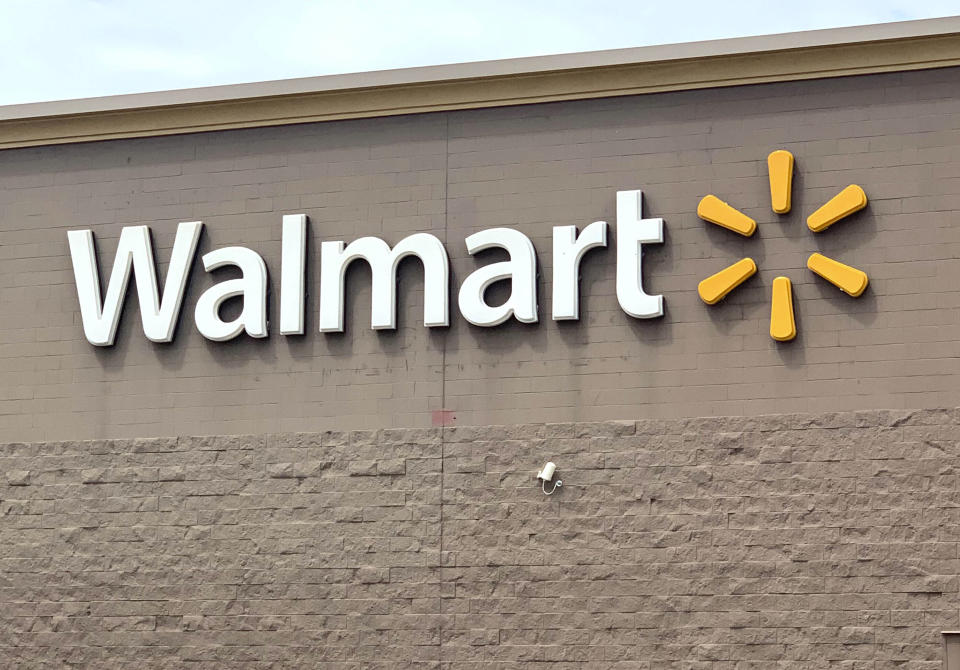
BBB/STAR MAX/IPx
U.S. workforce diversity reported in 2020: 56 percent white, 21 percent Black, 15 percent Latine, 5 percent Asian, 2 percent two or more races, 1 percent Native
U.S. workforce diversity reported in 2021: 53 percent white, 21 percent Black, 17 percent Latine, 4 percent Asian, 3 percent two or more races, 2 percent Native
U.S. workforce diversity reported in 2022: 52 percent white, 21 percent Black, 18 percent Latine, 4 percent Asian, 3 percent two or more races, 2 percent Native
Key 2020 commitment: “Walmart and the Walmart Foundation are committing $100 million to create a new center on racial equity. Through this $100 million commitment, the center will support philanthropic initiatives that align with four key areas: the nation’s financial, health care, education and criminal justice systems.”
The progress: Walmart could not be reached for comment, but in the company’s Culture, Diversity, Equity & Inclusion Fiscal Year 2022 Mid-Year Report, Walmart Inc. senior vice president and global chief of culture, diversity, equity & inclusion officer Ben Hasan, said:
“Our vision of ‘Everyone Included’ is unwavering, yet the past 18 months have made it clear that we must continually change how that constant commitment comes to life. That’s why for the first time since 2016 we’re changing our CDEI strategy by adding a fifth objective to Increase Enterprise Equity & Accessibility. This new objective emphasizes our commitment to equity in recent years and also codifies our focus on accessibility for people with disabilities which will be driven by our new Accessibility Center of Excellence…”
Along with the Walmart Foundation, Walmart was part of a group that committed a collective $125 million in May last year to The Asian American Foundation to measure and defend against anti-AAPI violence.
As part of its criminal justice shared value network, Walmart partnered with the Racial Equity Institute “to support the creation of a racial bias training for law enforcement.” And in its financial shared value network, it supported the launch of Morgan Stanley’s Next Level Fund “to support women and diverse businesses by increasing access to capital and providing strategic assistance.”
The claim: “Things really do change constantly at Walmart, but I couldn’t be more proud that our purpose, values and vision of ‘Everyone Included’ remain the same,” Hasan said in the midyear report.
NIKE INC.

U.S. workforce diversity reported in 2020: 43 percent white, 22 percent Black, 19 percent Latine, 9 percent Asian, 6 percent two or more races, 1 percent Native
U.S. workforce diversity reported in 2021: 41 percent white, 24 percent Black, 18 percent Latine, 10 percent Asian, 6 percent two or more races, 1 percent Native
U.S. workforce diversity reported in 2022: 40 percent white, 24 percent Black, 19 percent Latine, 10 percent Asian, 6 percent two or more races, less than 1 percent Native
Key 2020 commitment: “Today [June 12, 2020] Nike Inc. is announcing a $40 million commitment over the next four years to support the Black community in the U.S. on behalf of the Nike, Jordan and Converse brands collective. This commitment will be focused on investing in and supporting organizations that put social justice, education and addressing racial inequality in America at the center of their work.
During this past year, we’ve stepped up our own efforts and measures of accountability in the areas of Diversity, Inclusion and Belonging to foster an inclusive environment and attract a more diverse workforce.”
The progress: As the company told WWD, “Since June 2020, Nike, Inc. has invested a total of $20 million in its Black Community Commitment (BCC) of $40 million over four years. These investments are focused on economic empowerment, education innovation and social justice at the national and grassroots levels. [The funds went to:]
11 national organizations such as the National Urban League, NAACP Empowerment Programs and Pensole Lewis College of Business and Design
Nearly 100 local organizations across New York City, Los Angeles, Chicago, Portland, Memphis, St. Louis, Boston, Atlanta, Houston, Miami, Philadelphia and Washington, D.C
Employee engagement opportunities, such as a two-to-one match of employee donations to national BCC grantees
Nike also invested $1 million in grants to support eight historically black colleges and universities (Florida A&M, Delaware State, Morgan State, North Carolina A&T, Tennessee State, Tuskegee University and Texas Southern) Atlanta University Center Consortium and Georgia Black United Fund.
Nike’s Inclusive Community investment program is a direct reflection of what our eight Employee Networks, collectively known as NikeUnited, stand for: our commitment to diversity and inclusion in the communities where we live and work.
Grants totaling $5 million per year, support nonprofits that work to advance equality in cities throughout North America.
Intersectionality is a key consideration in our grant making, as it enables us to create more impact in each of the eight communities we support — the disability community; Asian American, Middle East and Pacific Islander communities; the Black community; the Latinx community; our military and veteran communities; Native American and Indigenous communities; the LGBTQIA+ community, and girls and women.
Jordan Brand and Michael Jordan have invested $16.5M of its commitment of $100 million over 10 years.”
TARGET CORP.
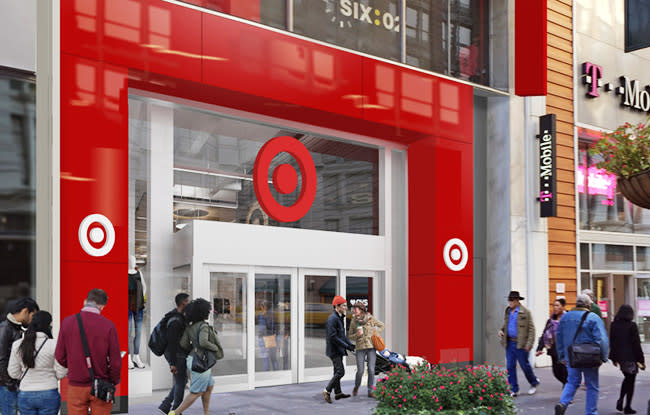
Courtesy photo
U.S. workforce diversity reported in 2020: 52 percent “non-diverse,” 48 percent “diverse”
U.S. workforce diversity reported in 2021: 49 percent white, 15 percent Black, 26 percent Latine, 5 percent Asian, 3 percent two or more races, 1.3 percent Native, less than 1 percent unknown.
U.S. workforce diversity reported in 2022: Target did not provide WWD an updated breakdown, noting its “2022 Workforce Diversity Report will be available in mid-June.”
Key 2020 commitment: “Target stands with Black families, communities and team members. As we face an inflection point in Minneapolis and across the country, we’re listening to our team, guests and communities, committed to using our size, scale and resources to help heal and create lasting change,” said Brian Cornell, chairman and CEO.
Initial efforts include:
A $10 million investment from Target and the Target Foundation to support long-standing partners such as the National Urban League and the African American Leadership Forum in addition to adding new partners in Minneapolis-St. Paul and across the country.
10,000 hours of pro bono consulting services for Black- and people-of-color-owned small businesses in the Twin Cities, helping with rebuilding efforts.
Continuing to provide essentials such as baby formula, diapers, medicine and more to communities most in need.
Target Circle, the company’s loyalty program, will offer guests the option to direct Target funds to local nonprofits and include organizations supporting social justice.
The progress:
The company told WWD, “Building on our initial commitment of $10 million to advance social justice and racial equity, in 2021 we announced a commitment of $100 million through 2025 to help fuel economic prosperity in Black communities across the country. We’re doing so by supporting local, Black-led organizations to ensure that resources are specifically designed for the communities they serve. This investment will focus on supporting students attending historically Black colleges and universities, or HBCUs, expanding our funding of Black-led nonprofits, and sponsoring programs that elevate Black stories and voices.
In 2020, we also committed to providing 10,000 hours of pro-bono consulting services for Black- and people-of-color-owned small businesses in the Twin Cities (which we achieved).
We’re proud to be a founding supporter of the Pensole Lewis College of Business & Design, the nation’s first re-opened historically Black college and the country’s first HBCU to focus on design. As co-founding partners, we help support Pensole’s operations and students as they begin their career journeys as creatives, designers, engineers and business leaders.
Target and the Target Foundation continues our work to expand our support of Black-led nonprofits doing groundbreaking work to advance racial equity and create economic opportunity in Black communities. This includes long-standing partners such as the National Urban League and the African American Leadership Forum, and new partners such as the Minnesota Holistic Black-Led Movement Fund, part of the Philanthropic Collective to Combat Anti-Blackness & Realize Racial Justice, helping provide grants that support the transformative procedures, practices and solutions that drive racial equity and justice.”
The claim: “The work to build a diverse and inclusive business environment is never complete,” the company said. “Target’s strategy is to treat diversity, equity and inclusion as a business imperative, similar to any other facet of our business, complete with goals, reporting and leader accountability. Since diversity, equity and inclusion are woven into the fabric of our business and core company values, we listen fearlessly and share regular updates against our goals, which pushes us to constantly iterate our approach.”
TJX COS. INC.
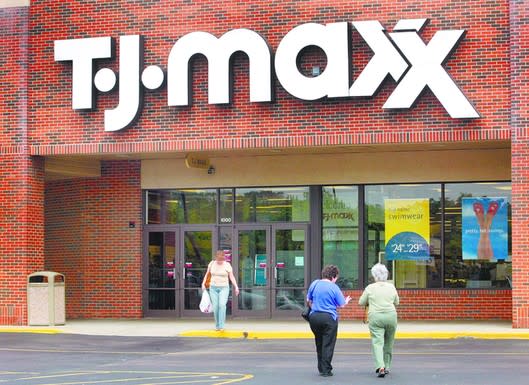
U.S. workforce diversity reported in 2020: 43 percent “not people of color,” 57 percent “people of color”
U.S. workforce diversity reported in 2021: 43 percent “not people of color,” 57 percent “people of color”
U.S. workforce diversity reported in 2022: 41 percent “not people of color,” 59 percent “people of color”
Key 2020 commitment: “We stand with our Black associates, customers and communities. We are committed to donating $10 million over two years to global organizations that combat racial injustice and address systemic racism.
We will work to grow a more inclusive and diverse organization at all levels, ensuring management opportunities are accessible to Black talent.”
The progress: “In regard to our workplace, we are committed to providing an inclusive environment where associates feel welcome, valued and engaged. We value a diverse workforce, and at the end of fiscal 2022, people of color comprised 59 percent of our total U.S. workforce and 35 percent of U.S. managerial positions. Our workplace efforts have continued to evolve over the last year. After hosting listening sessions with thousands of associates and completing our Global Inclusion and Diversity Survey, we solidified three priority areas to focus our longer-term efforts: Increase the representation of diverse associates along our talent pipeline; equip leaders to support difference with awareness, fairness, sensitivity and transparency, and empower all associates to continue to integrate inclusive behaviors, language and practices in how we work together and understand our role and responsibility to be inclusive.
Our talent acquisition team established an inclusion and diversity committee that aims to increase proactive outreach to diverse communities, engagement with diverse candidates, and further awareness and education with internal decision makers involved in hiring processes. In addition, we have developed and expanded relationships with several nonprofit partners in the U.S. — such as Leadership Enterprise for a Diverse America, The Posse Foundation, Bottom Line and Thrive Scholars — and have worked with them to support events, career development and recruitment opportunities for underrepresented high school and college students. We have also enhanced our outreach to Historically Black Colleges and Universities, or HBCUs, and partnerships with diverse on-campus organizations for recruitment events. We believe these connections will help us create a pipeline of future diverse talent with TJX.”
The claim: “To begin with our efforts in our communities, in 2020, we committed an incremental $10 [million] of donations over two years to support organizations working toward equity and racial justice, and we are pleased to report that we have since made those donations to organizations around the world. Through this work, we were able to expand existing partnerships and create new ones, working directly with each organization to understand their needs and determine how best to direct the funding to support specific projects and programs. This work ultimately expanded our ongoing approach to community support, and we are identifying a variety of ways to help us continue to be responsive to current needs.”
COACH (TAPESTRY INC.)
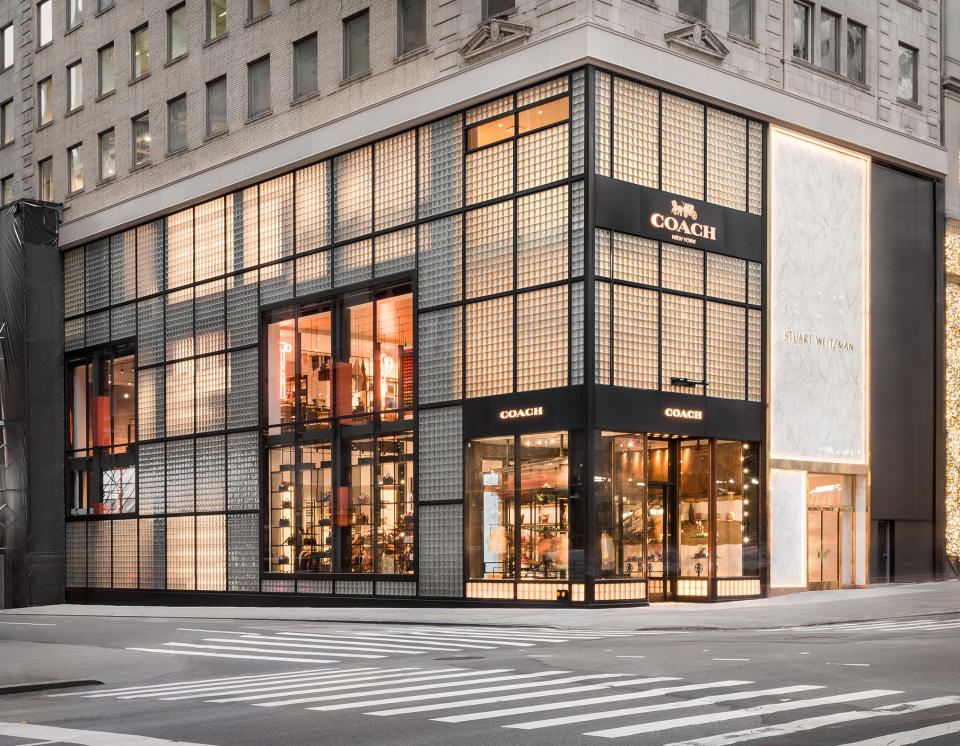
Courtesy Photo
U.S. workforce diversity reported in 2020: 42 percent white, 12 percent Black, 25 percent Latine, 13 percent Asian, 6 percent “other POC,” 2 percent not disclosed
U.S. workforce diversity reported in 2021: 42 percent white, 12 percent Black, 26 percent Latine, 13 percent Asian, 2 percent not disclosed
U.S. workforce diversity reported in 2022: 41 percent white, 14 percent Black, 26 percent Latine, 12 percent Asian, 3 percent two or more races, 1 percent Native, 2 percent not disclosed
Key 2020 commitment: “Together we stand with my fellow Black employees, customers, partners and the Black community as a whole. The time is now for meaningful action and we are in the process of partnering with a number of social justice, legal and corporate entities to formulate a longer-term plan for addressing systemic inequality. More to follow soon on the actions we are taking,” former Tapestry CEO Jide Zeitlin said at the time.
The progress: “Tapestry remains intentionally and purposefully committed to Equity, Inclusion and Diversity (EI&D). We believe this work is owned by every employee in the company and there is a role for every employee to play. One key channel for driving employee engagement is Employee Resource Groups (ERGs). Our ERGs are essential in cultivating a culture of inclusion and belonging, shaping and executing our EI&D strategy in service to our workforce, workplace and marketplace. Over the past year, we have seen participation in our ERGs increase by 63 percent. Our ERGs currently represent the Asian, Black/African American, LGBTQIA+ and Working Parents and Caregivers communities, and we plan to officially launch a Latinx ERG before year end. This year, the Tapestry Foundation created an ERG Community grant program to empower ERGs and regional inclusion councils to celebrate and support causes and organizations that our teams are passionate about. The program provides each ERG with a $25K stipend to grant to the nonprofit organization of their choice.
In [fiscal year] 2021, Tapestry also created the chief inclusion and social impact officer role that has since been filled by David Casey. In this role, David reports to Tapestry’s CEO, Joanne Crevoiserat and global human resources officer, Sarah Dunn.
In late 2021, Tapestry pledged $1 million and became a founding partner of the FIT Social Justice Center, a first-of-its-kind higher education program created to increase opportunity and accelerate social equity in fashion and creative industries for racially/ethnically diverse students. Tapestry also signed on to the newly formed Open to All ‘Mitigate Racial Bias in Retail Charter’ committing to implement data-informed strategies to help reduce racial bias in the retail environment. Tapestry CEO Joanne Crevoiserat also joined the Catalyst CEO Champions for Change.
In May, Tapestry hosted and sponsored an inaugural New York Latina History Day event in partnership with Hispanas Organized for Political Equality (HOPE) and awarded a grant to support their advocacy work, leadership training and critical research, including the upcoming Economic Status of Latinas Report,” the company told WWD.
The claim: “At the start of [fiscal year 20]22, Tapestry announced that, on a global level, 10 percent of leadership’s annual incentive compensation would be tied to EI&D measures. Progress is measured through a scorecard consisting of qualitative and quantitative measures of success in the following actions:
Greater equity and transparency in internal mobility by creating equality in opportunity and leveling the playing field for talent to access opportunities
Diversifying our sourcing and embedding accountability measures in our recruitment process
Ensuring a culture of inclusion and holding ourselves accountable by listening to our employees and collecting their feedback throughout the year, measuring progress through an Inclusion Index
This year, we partnered with nine Historically Black Colleges and Universities (HBCUs) and 13 NGO partners to diversify our internship cohort, resulting in a 23 percent increase (since last summer) in racial and ethnic diversity of our incoming class (53 percent vs. 65 percent).”
KOHL’S CORP.
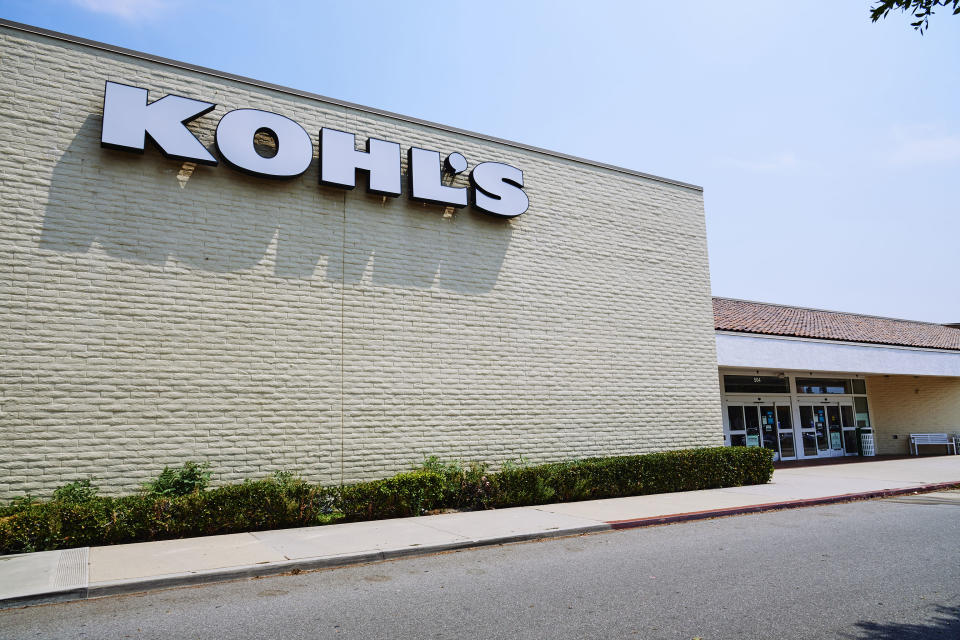
U.S. workforce diversity reported in 2020: No data shared on workforce gender or ethnicity representation.
U.S. workforce diversity reported in 2021: 57 percent white, 43 percent “BIPOC.”
U.S. workforce diversity reported in 2022: Kohl’s did not share a 2022 update with WWD but said, “Kohl’s total workforce population proportionally reflects U.S. workforce data, according to U.S. Bureau of Labor Statistics 2020 report.”
Key 2020 commitment: “Kohl’s is committed to serving and celebrating all families. It is our responsibility to acknowledge injustices and commit to the actions and behaviors that will make Kohl’s and the world a better place. Through our diversity and inclusion efforts, we are focused on casting a wider net to attract diverse talent, strengthening our pipeline and ultimately contributing to economic empowerment.”
The progress: According to Kohl’s chief diversity & inclusion officer Michelle Banks: “At Kohl’s, we are dedicated to creating a more equitable and inclusive environment for our people, our customers and our communities––and our D&I strategy reflects that. Over the past two years, we’ve accelerated how we are embedding D&I throughout our business by being intentional about our programs and practices and holding ourselves accountable by measuring our results and progress. Below are our 2025 goals and progress:
Our People: We strive to be purposeful in attracting, growing and engaging more diverse talent while giving associates equitable opportunities for career growth. Along this journey, we’re championing the value and strength of our differences to foster a workplace of inclusion and belonging.
Goal: Increase development opportunities for Black, Indigenous and People of Color (BIPOC) associates
Progress: Offered additional development opportunities including development programs, mentorship and coaching
Our Customers: We strive to celebrate our differences and help more customers see themselves reflected in our brands. Along this journey, we’re working to offer culturally relevant products, designs and storytelling that is meaningful to diverse customers.
Goal: Donate $20 million to diverse communities from 2022 to 2025, specifically, Asian Americans and Pacific Islanders (AAPI), Black, Indigenous and People of Color (BIPOC), LGBTQIA+, people with disabilities, veterans and active military members and women
Progress: Enhanced goal established for 2022+
The claim: “At Kohl’s, we are committed to driving meaningful progress, which is made by the actions and behaviors of every single associate across the company,” Banks said. “We are purposeful in attracting, growing and engaging more diverse talent; we launched an in-house Diversity Design Council to develop, purchase and curate culturally relevant products for our customers; and through our philanthropic partnerships, we are working to support more equitable outcomes for underrepresented communities. And in 2021, as part of our goal to triple our spend with diverse suppliers by 2025, I’m proud to share that we increased our spend by over 65 percent. I look forward to the work we have ahead of us on our journey to create a more equitable environment for all –– at Kohl’s and beyond.”
ROSS STORES

U.S. workforce diversity reported in 2020: 28 percent “not people of color,” 72 percent people of color.
U.S. workforce diversity reported in 2021: Ross did not provide WWD any updates for the story.
U.S. workforce diversity reported in 2022: Ross could not be reached for updates on its diversity.
Key 2020 commitment: “We stand against racial injustice. Ross is committed to listening, learning and taking action. We can and will do better…”
The progress: Ross could not be reached for any updates to its progress on diversity and its most recent update available in this area comes from its 2020 Corporate Social Responsibility Report, which does not include any racial demographic data.
The claim: To data, Ross Stores has said little publicly about its efforts around diversity and inclusion.
NORDSTROM INC.
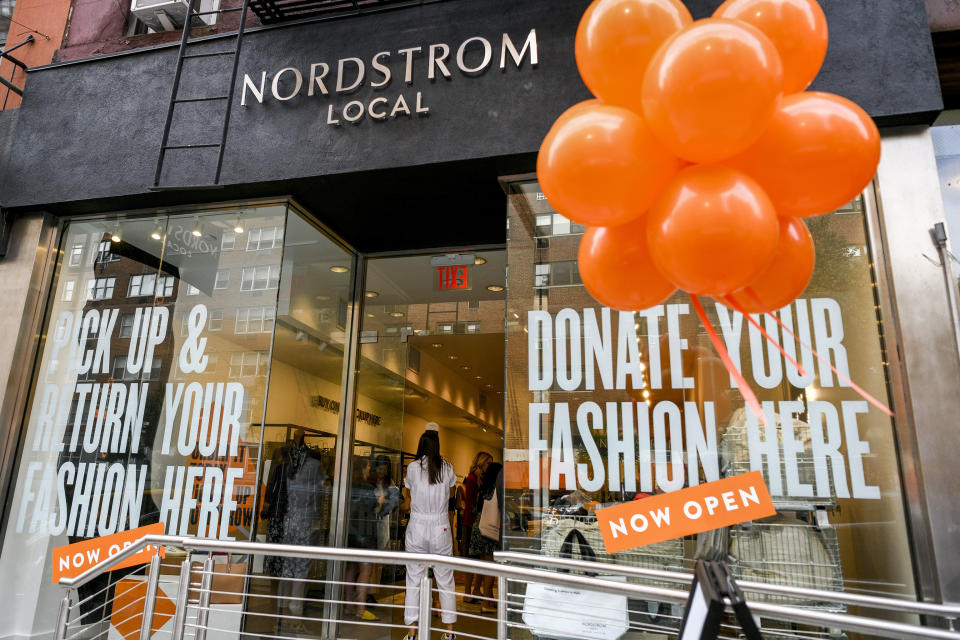
Clint Spaulding/WWD
U.S. workforce diversity reported in 2020: 41 percent white, 19 percent Black, 23 percent Latine, 11 percent Asian, 6 percent not identified
U.S. workforce diversity reported in 2021: Nordstrom was unable to provide updated data on its representation but said the information will be part of its 2020 annual report slated for release “later this summer.”
U.S. workforce diversity reported in 2022: 34 percent white, 21 percent Black, 22 percent Latine, 12 percent Asian, 11 percent not identified
Key 2020 commitment: “…We’ve made corporate grants to the NAACP Legal Defense and Education Fund as well as to the Black Lives Matter Global Network Foundation. We encourage our employees to give and will match their donations to nonprofits working to address these issues.
We have a goal to increase the diversity of our teams to reflect the diversity we see across North America, and we have new programs in place to help us get there. We’re actively reviewing all of our hiring practices and processes, including how we recruit, interview, hire, onboard and promote. As part of this work, we’re introducing a new Inclusive Hiring training that gives our recruiting teams and hiring managers the education and resources they need to find and select diverse candidates, free from bias. We’re also focused on building our managers’ ability to understand how bias works and how they can minimize the impact it has in making decisions about their teams.”
The progress: As Nordstrom told WWD, “In 2021, we focused on laying the groundwork for an evidence-based approach to broadening our workforce diversity by 2025. We began by collecting and analyzing data to better understand the current state, what impacts our ability to diversify and how we can eliminate roadblocks to hiring a more representative talent base. Our hiring managers, human resources and recruiting teams are using this data as the basis to drive progress. Additionally, Nordstrom is one of the founding companies of OneTen, a nationwide coalition committed to hiring, promoting and advancing 1 million Black individuals into family-sustaining careers over the next 10 years.
Over the last two years, we’ve improved diversity throughout the company. At the end of 2021 women made up 62 percent of leadership and 40 percent of our Board of Directors, and people of color comprised 40 percent of leadership and 30 percent of our Board. Throughout 2021, we’ve made improvements in representation in leadership and management roles, with Black representation increasing in both front-line (+3 percent) and midlevel manager levels (+1 percent). Latinx leadership also improved in front-line roles (+2 percent). We continue to build diversity as opportunities emerge at more senior levels of our organization.
In 2020, we set a goal to double our charitable giving to nonprofit organizations that promote anti-racism. One corporate donation in support of that goal was made to our multiyear partner, the National Urban League. Since 2020, we have given them $450,000.
We’ve committed to delivering $500 million in retail sales from brands owned, operated or designed by Black and Latinx individuals by 2025; in 2021, we sold $177,037,500. Our intent, beyond providing a diverse product offering, is to consciously and effectively partner with the suppliers we bring on board, helping to support and develop nascent brands so that our partnerships can endure and grow well beyond the time set to achieve our goal.
In 2021, we added 145 new Black- and Latinx-owned brands to our assortment.”
The claim: “If the past two years have taught us anything, it’s the value of knowing exactly what we stand for,” Pete and Erik Nordstrom said in the company’s 2021 Impact Report released in April this year. “For us, doing business in ways that make a positive difference in the communities where we operate has always been a business imperative. These values have long served as a north star for our company — guiding the decisions we make as a business, the partnerships we form and the causes we support. They also serve as a standard we use to continuously evaluate our progress and challenge ourselves to do better. In 2020, they helped us shape a set of five-year goals that serve to measure and accelerate our ability to affect positive change.”
THE NORTH FACE (VF CORP.)
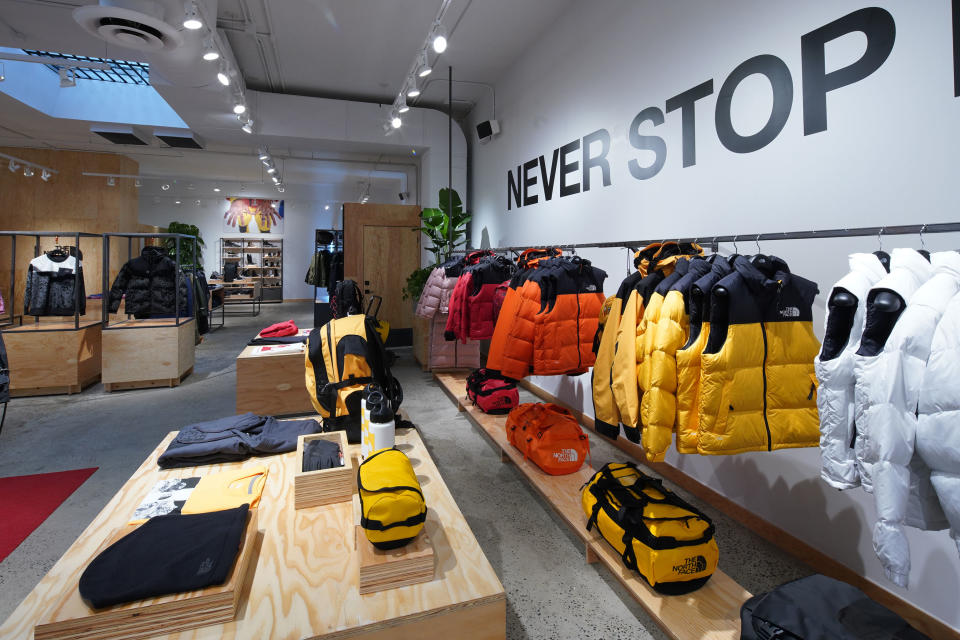
George Chinsee/WWD
U.S. workforce diversity reported in 2020: 43 percent white, 13 percent Black, 30 percent Latine, 14 percent not identified.
U.S. workforce diversity reported in 2021: 45 percent white, 55 percent “BIPOC”
U.S. workforce diversity reported in 2022: VF was not available to provide WWD with an update on its representation data. The latest info available is from its Inclusion, Diversity, Equity & Action Annual Profile 2021 as noted above.
Key 2020 commitment: “To combat racism now, we’re donating $50,000 to the ACLU to support their work on police accountability, racial justice and defending the right to protest.
…Our Explore Fund has donated to organizations fostering equality in the outdoors for the past 10 years. Going forward, our focus will narrow solely to address barriers that prevent safe exploration and create access for all. To start, we’re donating $25,000 each to our long-standing partners, Outdoor Afro and PGM One immediately.
…To build lasting change, it starts from within. From reassessing our partnerships, to working with community leaders committed to societal change, to bringing more Black and athletes of color to our global team to reflect the stories and faces missing today — every action counts.”
The progress: VF was not available to specifically address progress on its 2020 commitment, but in its Annual Profile released in November, Lauren Guthrie, vice president of global inclusion, diversity, equity and action, said, “…identifying opportunities for our company to show up and drive meaningful and palpable change for our associates, communities and consumers is at the top of my list.”
In January this year, VF earned a top score of 100 on the Human Rights Campaign Foundation’s 2022 Corporate Equality Index, which measures corporate practices related to LGBTQ workplace equality.
In February, VF brand The North Face, along with VF Foundation and Smartwool, sponsored the first all-Black team to attempt to summit Mount Everest.
In March, the company announced the continuation of its DiverCity x Design program with apprentices chosen to promote racial equity in the industry moving on from a rotation at Timberland to work with Vans.
Last month, it announced the continuation of its Diversity Fellowship Program, a partnership with law firm Fox Rothschild LLP to improve diversity among legal talent.
The claim: VF was not available to make any statements about its progress on diversity since last year.
MACY’S INC.
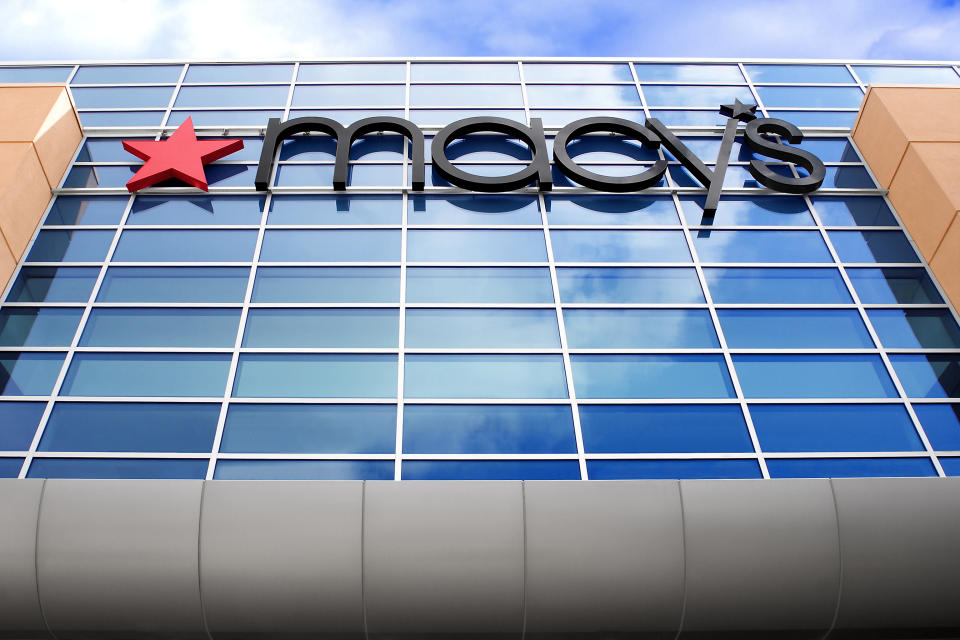
U.S. workforce diversity reported in 2020: 40 percent “non-ethnically diverse,” 60 percent “ethnically diverse”
U.S. workforce diversity reported in 2021: 38 percent white, 21 percent Black, 24 percent Latino, 10 percent Asian, 5 percent two or more races, 2 percent Native
U.S. workforce diversity reported in 2022: 35 percent white, 22 percent Black, 25 percent Latine, 11 percent Asian, 5 Native, 2 percent two or more races
Key 2020 commitment: “Today [June 7, 2020] we are committing $1 million in support of organizations combating social and racial injustice, and will continue our work to ensure equity within all aspects of our organization.
From Macy’s 2018 Corporate Sustainability Report: “Achieve more ethnic diversity by 2025 at senior director level and above, with a goal of 30 percent.”
The progress: “In the spring of 2022, Macy’s, Inc. launched Mission Every One, our enterprise-wide social purpose platform to build on the company’s heritage of corporate citizenship and to achieve positive societal change. With Mission Every One, Macy’s, Inc. commits to leveraging its resources, talent, and scale to create a brighter future with bold representation for all,” the company told WWD.
The social purpose platform is built on three pillars of impact — people, communities and planet — and will direct $5 billion of the company’s spend, scaling through 2025, to the partners, products, people, and programs that help create a more equitable and sustainable future. Jeff Gennette, Macy’s, Inc. chairman and chief executive officer, said at the time of the March announcement: “Mission Every One will be an essential part of how we operate and the decisions that we make as a business. We believe that when our business enables everyone to stand in their truth and have a seat at the table, they realize their full potential, which unlocks innovation and progress for all.”
“Increasing ethnic representation at the leadership level remains a top priority. We made progress across all levels last year and achieved 27.5 percent ethnic representation against our 30 percent goal by 2025,” Macy’s said.
The claim: As Macy’s Inc.’s chief diversity, equity and inclusion officer Shawn Outler said, “I am incredibly proud to lead the advancement of diversity, equity and inclusion across Macy’s, Inc. and to dedicate myself to the work of earning our place as DE&I leaders in the fashion retail industry. I am especially proud of the focus, commitment and engagement of our colleagues at Macy’s, Bloomingdale’s and Bluemercury, who embrace and drive this important work forward each and every day — through their words and actions, their choices and decisions and especially their example.”
RALPH LAUREN CORP.

Courtesy Photo
U.S. workforce diversity reported in 2020: 39 percent white, 23 percent Black, 23 percent Latine, 8 percent Asian, 3 percent two or more races, 1 percent Native, 3 percent not identified
U.S. workforce diversity reported in 2021: 38 percent white, 24 percent Black, 23 percent Latine, 8 percent Asian, 3 percent two or more races, 1 percent Native, 3 percent not identified
U.S. workforce diversity reported in 2022: 33 percent white; 27 percent percent Black, 24 percent Latine, 7 percent Asian, 3 percent two or more races, 1 percent Native, 5 percent undeclared
Key 2020 commitment: “To start this process of meaningful change, we are expanding our existing multicultural D&I group, ‘Mosaic,’ established last year by creating an Advisory Group with a focus on amplifying Black and African American voices inside our company. This group will be at the table as our additional initiatives are put into action — empowered to directly advise our Executive Leadership Team as we build a culture that reflects our values for everyone.
…We will continue to disclose the racial and ethnic makeup of our employee base. We commit to elevating more Black and African American talent into our leadership ranks. For every open role at the vice president level or above, we will interview at least one Black or African American candidate as well as at least one candidate from other underrepresented groups.
…We will build a set of diversity expectations for our partners and vendors, as we have already begun to do in the area of sustainability.”
The progress: In the 2021 version of its Global Citizenship & Sustainability Report, Ralph Lauren Corp. said it’s committed to diversity data transparency. The company also said it is working to ensure that by 2023, at least 10 percent of its global leadership team is Black and 20 percent are people of color.
When it comes to advancing social justice, Ralph Lauren said, “We designated four CEO Action for Racial Equity fellows — delegates from our company who are temporarily stepping away from their roles to create large-scale impact for racial equity and justice by advancing public policy reform at the U.S. local, state and federal levels. In the areas around our largest American facilities — New Jersey, New York and North Carolina — we started opening dialogues with public works bureaus, nonprofits, district attorney offices, school districts and police and sheriff departments.”
The claim: “Reflecting on the last few years of our DE&I journey at Ralph Lauren, we continue to be optimistic about our progress, while recognizing that this work will never end,” the company told WWD. “After a lot of intentional initial work to create clear foundations and infrastructure to support our efforts, we’re acting on our commitments to racial equity in new ways. We’ve placed a major focus on opening the aperture of our design inspiration and brand storytelling to portray a more inclusive American dream. With efforts like our Polo Ralph Lauren Exclusively for Morehouse and Spelman Colleges Collection earlier this year, we’re evolving what authentic, inclusive and collaborative storytelling means to us. We also continue to meaningfully progress against the goals we set out to increase diversity in our leadership and look forward to sharing updates in our upcoming Global Citizenship & Sustainability Report.”
LEVI STRAUSS & CO.
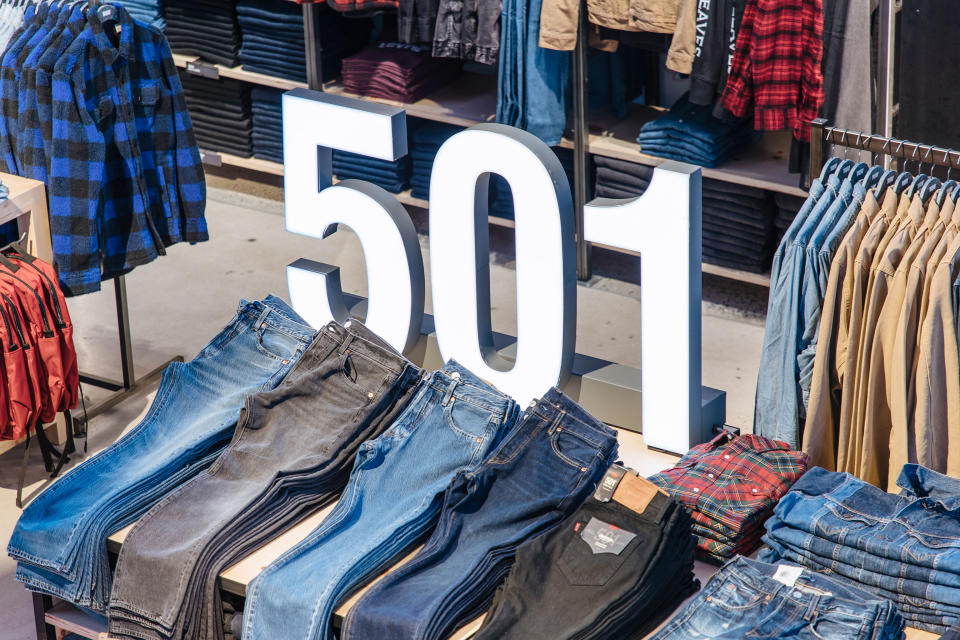
Courtesy Photo
U.S. workforce diversity reported in 2020: 37 percent white, 18 percent Black, 28 percent Latine, 10 percent Asian, 3 percent two or more races, 2 percent Native, 2 percent not specified
U.S. workforce diversity reported in 2021: 39 percent white, 17 percent Black, 28 percent Latine, 10 percent Asian, 5 percent “other BIPOC,” 2 percent not specified
U.S. workforce diversity reported in 2022: 36 percent white, 17 percent Black, 30 percent Latine, 10 percent Asian, 5 percent “other BIPOC,” 2 percent not specified
Key 2020 commitment: “We will work until the racial makeup of our U.S. corporate employees and our leadership at least match that of the United States. We pledge to improve the Black and Latinx representation numbers every year as we work toward that goal. We’re launching a number of initiatives today to help us reach our goal:
We will hire an executive-level Head of Diversity, Inclusion and Belonging in 2020 to lead our efforts to create a more diverse and equitable company and culture.
Starting this year, half of the interviewees for open positions will be racially diverse candidates and we will ensure that they are interviewed by a panel including racially diverse leaders.
In 2021, we will launch a Retail/Distribution Center to Corporate career path program to nurture and promote the incredible, diverse talent that already exists throughout our company.”
The progress: “We’ve made significant progress on this commitment since 2020,” Elizabeth A. Morrison, Levi Strauss & Co. Chief Diversity, Equity & Inclusion Officer, told WWD. “First, with me coming on board as the new chief diversity, equity & inclusion officer to set the strategic direction and build a global team with deep expertise across DE&I and HR Communications to address all areas reflected in the statement. One of our 2022 global priorities is to strengthen our position as a world-class destination for talent, including investing in our people as a competitive advantage. I’m thrilled to share some of the most exciting ways we’re bringing this commitment to life.
We just launched two new talent development programs for our senior women (LS&Co. Lab) and Black and Latinx/Hispanic talent (Elevate: Accelerate Your Career). LS&Co. Lab was curated specifically to further develop our high-performing senior women leaders, with the aim to increase their representation and retention while helping to tailor and advance their careers.
Elevate: Accelerate Your Career is a four-month career efficacy program that honors the unique experiences and challenges of our Black and Latinx/Hispanic talent; acknowledging headwinds they face and empowering participants with the confidence, tools, resources and the professional network they’ll need to advance their career.
Concurrently, managers of the participants engage in a development experience to develop their inclusive leadership knowledge and capabilities enabling them to better support their BIPOC team members personal and professional development.”
The company launched its first Diversity, Equity and Inclusion Impact Report in March this year, which outlines its progress across the board.
“In the second half of the year, we will focus on the redesign and relaunch of our Employee Value Proposition and our Global Employer Brand, for which DE&I will heavily influence,” Levi’s said. “We’ll also conduct our equity review for our Talent Acquisition, Talent Development and Talent Management process as we seek equity across all talent processes from hire to retirement.”
The claim: While we are still a work in progress, I am so proud of the commitment and continued drive and participation from our C-Suite to our retail employees as we work together to create our culture of inclusion and belonging. We’re building on the foundation we laid in 2021 and are working to strategically integrate our practices into our talent management infrastructure and strategy.
Additionally, 11,000+ employees recently completed our first-ever Diversity, Equity & Inclusion (DE&I) Pulse Survey. The survey was comprised of 10 questions which delved into employees feeling on trust, belonging, career equity and growth. Our global inclusion index score was 81 percent! A fantastic reflection of our culture, our employee’s experience and pride in how we live our values and our commitment to DE&I at LS&Co.”
UNDER ARMOUR INC.
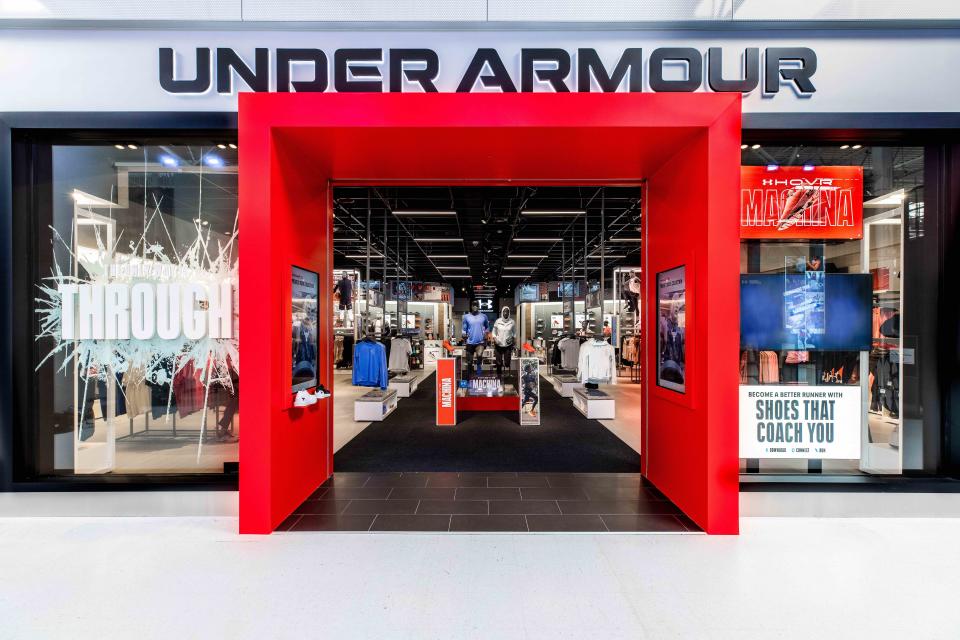
Shawn Hubbard @shawn_hubbard
U.S. workforce diversity reported in 2020: 71 percent white, 11 percent Black, 7 percent Latine, 7 percent Asian, 3 percent two or more races, 1 percent Native (*reflects corporate)
U.S. workforce diversity reported in 2021: 50 percent white, 17 percent Black, 21 percent Latine, 7 percent Asian, 4 percent two or more races, 1 percent Native (*reflects total workforce)
U.S. workforce diversity reported in 2022: 49 percent white, 18 percent Black, 23 percent Latine, 6 percent Asian, 4 percent two or more races, less than 1 percent Native (*reflects total workforce)
Key 2020 commitment: “…We are committed to driving the actions that are necessary to improve our workforce diversity — specifically at management and leadership levels of the organization — through the following:
Amplification of our recruiting efforts to improve the representation of historically underrepresented groups in our corporate locations, particular at the director and above levels
Increased funding to support the professional development of our historically underrepresented groups with a focus on career advancement
Enhanced accountability measures for leaders to hire, retain and advance historically underrepresented groups
Accelerated education for all teammates on creating inclusive cultures, supporting anti-racism and being an effective ally,” said Patrik Frisk, president and CEO.
The progress: An update on the Under Armour website in March said: “We have set measurable goals to improve the diversity of our talent through hiring and internal advancement.
At the time, the company said, “We are tying annual incentive pay for all corporate teammates to the achievement of our accelerated diversity and inclusion goals. We are reviewing pay equity across all populations on an annual basis.
We committed to 12 percent of director and above positions filled by Black talent by year end 2023, in addition to our existing commitment to 30 percent of director and above positions filled by BIPOC talent. We are currently at 8 percent and 25 percent, respectively. We committed to 12 percent of leadership team succession slates filled by Black talent by year end 2023, in addition to a commitment of 30 percent of leadership succession slates filled by BIPOC talent. We are currently at 10 percent and 27 percent, respectively. We are publishing our representation statistics externally on an annual basis to hoId ourselves accountable to our goals.”
The claim: Under Armour chief people and administrative officer Tchernavia Rocker, told WWD, “Progress has no finish line. We continue to drive our DEI acceleration plan and remain focused on steady and sustainable progress towards our commitments. We recognize that we have much to do, but we are encouraged by the impact we are driving within our walls and in our communities.”
OLD NAVY (GAP INC.)
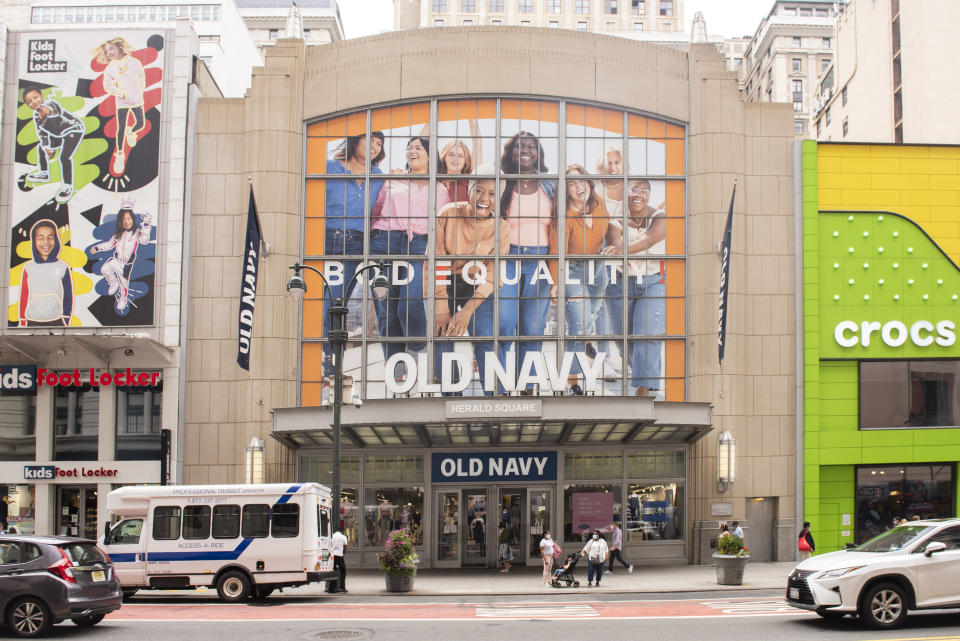
U.S. workforce diversity reported in 2020: 54 percent white, 4 percent Black, 10 percent Latine, 27 percent Asian, 5 percent “other minority”
U.S. headquarters diversity reported in 2021: 54 percent white, 4 percent Black, 10 percent Latine, 26 percent Asian, 6 percent “other”
U.S. headquarters diversity reported in 2022: 53 percent white, 4 percent Black, 10 percent Latine, 26 percent Asian, 5 percent two or more races, 2 percent Native
Key 2020 commitment: “…We are committed to doubling the representation of Black and Latinx employees at all levels in our US HQ offices, doubling the representation of our Black and Latinx employees in functions that make and market our products, and increasing Black representation in store leader roles by 50 percent by 2025, because our teams should look like the communities we serve.”
The progress: Gap Inc. published its latest Equality & Belonging report Thursday. In an opening message, chief executive officer Sonia Syngal said, “This report demonstrates the progress we have made toward meeting our 2025 commitments, from strengthening the pipeline of diverse talent to annually affirming equal pay across racial and gender lines.”
As part of that 2025 commitment, Gap Inc. said, as it did in the 2021 release of this report, “We will double the representation of Black and Latinx employees in our U.S. headquarters offices by 2025 to mirror our customers. We will place a particular focus on functions that make and market our products to ensure we are creating for all, with all. We also plan to increase representation of Black employees by 50 percent in our store leader roles in the U.S. by 2025.”
To date, representation in Gap’s store leadership roles is: 68 percent white, 9 percent Black, 18 percent Latine, 3 percent Asian, 2 percent two or more races. Among its officers in the company, representation has a much longer way to go. Currently, it’s 81 percent white, 5 percent Black, 5 percent Latine, 8 percent Asian, and 1 percent two or more races.
In September, the company announced it was named No. 1 on market data firm Refinitiv’s Diversity and Inclusion Index. “Refinitiv assesses thousands of public companies for key factors, including diversity of our teams, inclusion practices and programs, and people development and engagement. To be ranked as a leader in this index is all thanks to our employees and collective efforts to become the most inclusive company in the world,” Gap Inc. said at the time.
In October, the company launched its BR x Harbison women’s collection, designed by Charles Harbison, who won Banana Republic’s competition in partnership with Harlem’s Fashion Row.
The claim: “The idea that we all deserve to belong — and on our own terms — is core to who we are and how we run our business,” Syngal said in last year’s report. “Our journey to be the most inclusive company in the world began 52 years ago when our founders opened a store with an equal stake and created an experience fit for all. In 2020 — a year filled with disruption — we faced hard truths and, as a company, articulated our north star to be Inclusive, by Design. It will take all of us working together to create lasting change. We will devote all that is necessary because there is simply no exception to inclusion. With the launch of this inaugural report, I’m grateful to those who are leading our transformation — digging in every day and continually raising the bar to build a culture of belonging for all. This is the power of our values. And our work is never done.”
SKECHERS
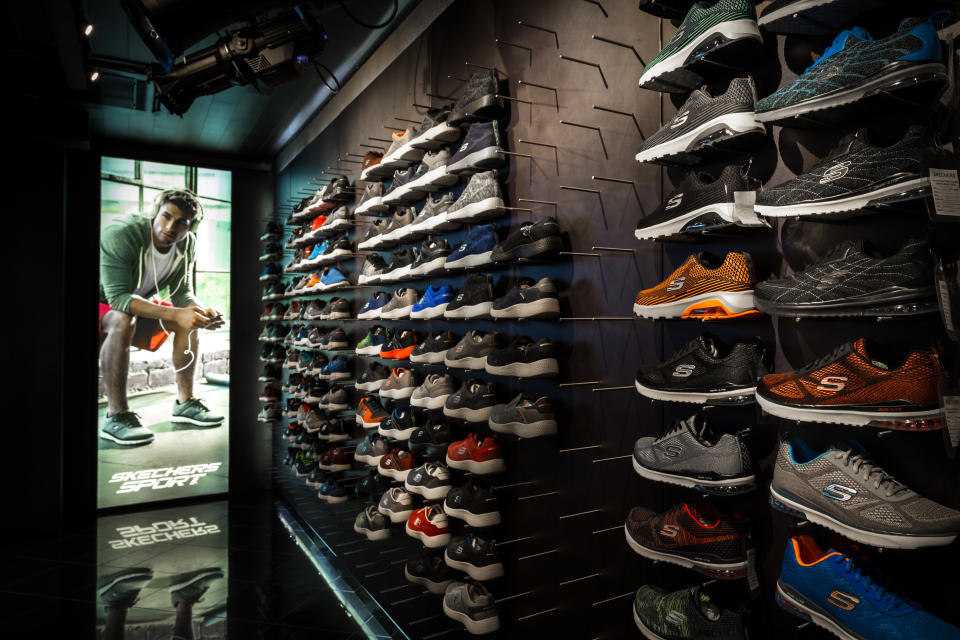
Courtesy Photo
U.S. Workforce Diversity Reported in 2020: Skechers did not share any data about workforce representation by ethnicity or gender in 2020.
U.S. Workforce Diversity Reported in 2021: Skechers declined to share any data about workforce representation by ethnicity or gender with WWD.
U.S. workforce diversity reported in 2022: Skechers said it was “unable” to provide any numbers addressing racial diversity.
Key 2020 commitment: “Change only comes when we stand together. End racial injustice.”
The progress: “Our talent strategy centers on creating a diverse, multifaceted workforce where many voices and backgrounds are well represented—and we aim to hire qualified candidates with unique perspectives, as we believe this best serves our global brand and its broad appeal. We market to candidate pools beyond our backyard and often industry, such as HBCUs, diverse student organizations (including National Black MBA Association), military families and veterans, and non-traditional colleges, universities and trade schools,” Leslie Riggs, Skechers global head of human resources, told WWD. “This philosophy is exercised at all levels of our organization including our board, where we added our latest female member earlier this year—bringing our total number of women on the board to three, two of whom identify as persons of color.”
The claim: “We continuously strive to improve our hiring practices as well as our communications, encouraging cultural mindfulness among our employees,” Riggs said. “We remain dedicated to nurturing a more diverse, thoughtful workforce and evolving our conversation to better reflect the world we live in.”
DICK’S SPORTING GOODS
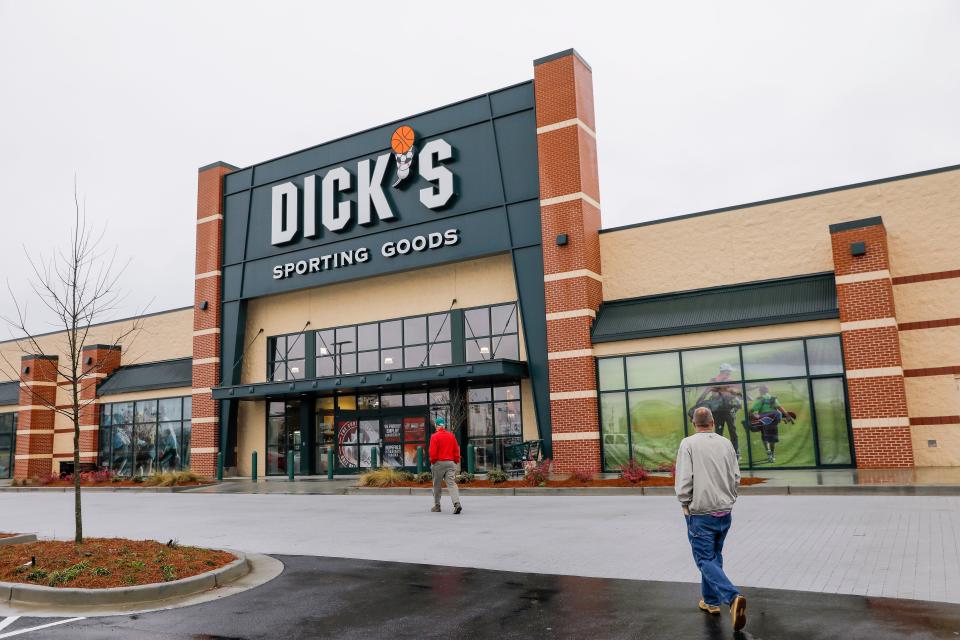
Erik S Lesser/Courtesy Photo
U.S. workforce diversity reported in 2022: Dick’s Sporting Goods was not in the top 20 fashion companies in Brand Finance’s 2021 ranking, so it’s appearing on this WWD list for the first time this year. The company could not be reached for an update on its diversity progress and its latest info, from its 2020 Purpose Playbook addresses U.S. management only: 67 percent white, 12 percent Black, 12 percent Latine, 3 percent Asian, 6 percent “other.”
Key 2020 commitment: “We have taken the time to reflect, listen, and learn. We know this has been an extremely difficult time for our nation, our teammates and the communities we serve. We are deeply saddened by the tragedies and senseless deaths over the past few weeks, which are a symbol of the longstanding, deep-rooted issues of racism and injustice in our country. We are also saddened about the ensuing unrest throughout communities across the nation. The systemic disadvantages of people of color in our society diminish and divide us — and the communities we serve.
We believe all people deserve dignity and respect. We don’t tolerate or condone racism, and we want to be part of the change we want to see in our nation. We will continue to invest in and support the communities we serve, and will continue to seek new opportunities to make a difference — especially for those communities that have been impacted the most.
We can’t solve all of these issues tomorrow, but we can make progress — together.”
The progress: Dick’s could not be reached for an update on its progress.
PVH CORP. (TOMMY HILFIGER, CALVIN KLEIN)
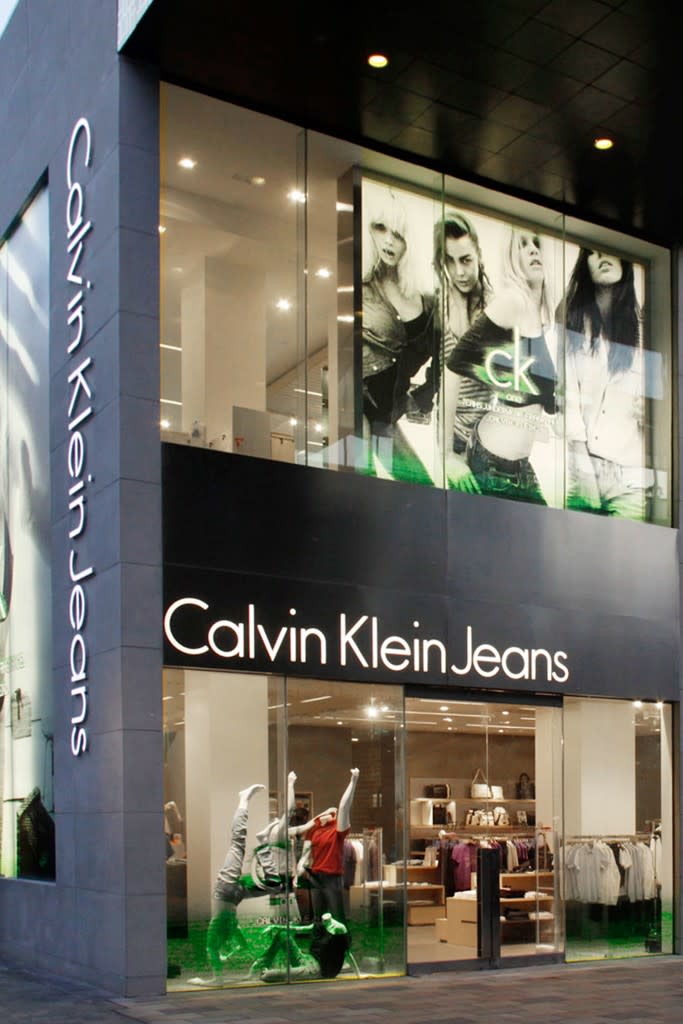
Courtesy of Calvin Klein, Inc.
U.S. workforce diversity reported in 2020: 39 percent white, 15 percent Black, 32 percent Latine, 9 percent Asian, 3 percent two or more races, 2 percent Native
U.S. workforce diversity reported in 2021: 40 percent white, 15 percent Black, 31 percent Latine, 9 percent Asian, 5 percent “other,” 1 percent not declared
U.S. workforce diversity reported in 2022: 39 percent white, 17 percent Black, 31 percent Latine, 9 percent Asian, 4 percent Native or two or more races
Key 2020 commitment: “The PVH Foundation will be making a donation to organizations that support the fight against social injustice. We will continue to work toward creating an environment and society where we are stronger together.”
The progress: “I am very proud and thankful to our global associate taskforce teams for driving progress across all our I&D Commitments, which help shape our culture and how we show up in the workplace, marketplace and community,” PVH Corp chief diversity officer, and senior vice president of global talent acquisition Lance LaVergne, told WWD. “Without their leadership and collaboration, none of this would be possible.”
PVH said it is “progressing toward the goal of gender parity globally in roles at the SVP level and above and BIPOC representation in the U.S. at the director level and above.”
The company implemented a diverse candidate slate requirement that aims for 50 percent of all U.S. based candidates interviewed at the director level and above to represent at least one dimension of diversity. “We are in the early stages of this program and excited about the potential to create measurable changes in senior management,” LaVergne noted.
As part of its leadership goals, PVH said, “People Managers are now required to establish two I&D leadership priorities as part of the Performance and Development process to help drive a culture of inclusion and equity and foster a greater feeling of belonging.”
Through The PVH Foundation, the company also announced new investments totaling $10 million over the next four years that will go toward global nonprofit organizations that will “increase awareness of and access to opportunities in the fashion industry for individuals from underserved and underrepresented communities.”
“With driving fashion forward for good at the core of everything we do, our new partnerships will help PVH make a greater global impact in our communities” said Stefan Larsson, chief executive officer, PVH Corp. “As a company, we are committed to making a difference with inclusion and diversity, and we look forward to elevating the next generation of innovators around the world.”
The claim: “The commitments PVH has implemented over the past year are establishing a strong foundation on which to build their efforts to increase representation,” the company said. “These commitments represent a combination of efforts whose impact will be seen in the short, intermediate and long-term. Senior leadership across the organization is expressly committed to making progress in these areas and serve as the executive sponsors of these initiatives.”
MICHAEL KORS (CAPRI HOLDINGS)
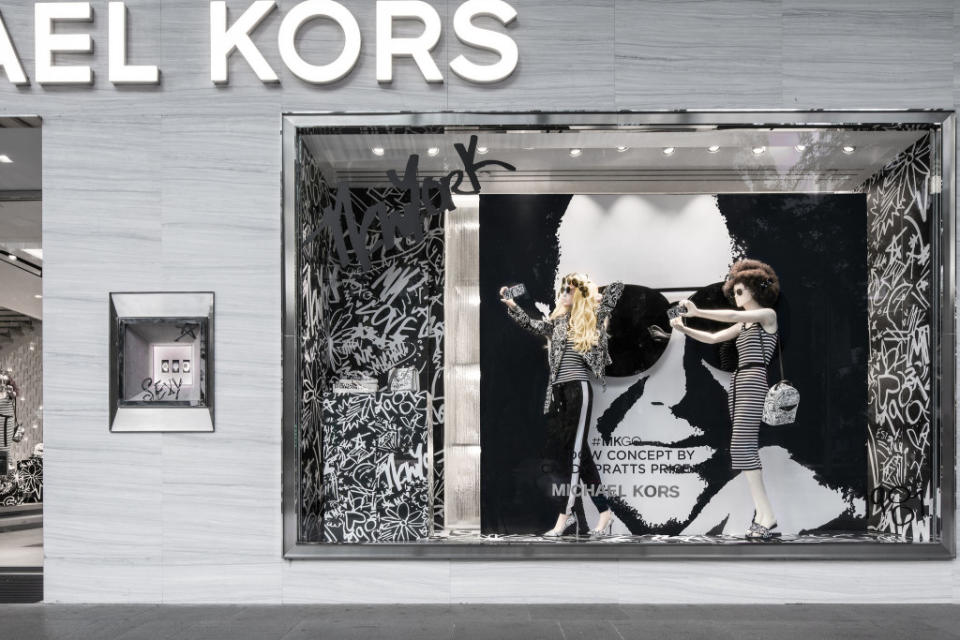
Courtesy Photo
U.S. workforce diversity reported in 2020: 40 percent white, 10 percent Black, 32 percent Latine, 12 percent Asian, 4 percent two or more races, 2 percent Native
U.S. workforce diversity reported in 2021: Capri Holdings told WWD, “We have not yet published updated employee demographics but intend to do so before the end of the year.”
U.S. workforce diversity reported in 2022: 34 percent white, 10 percent Black, 30 percent Latine, 10 percent Asian, 7 percent two or more races, 1 percent Native, 8 percent undisclosed
Key 2020 commitment: “Together with Capri Holdings, our parent company, we are donating to the NAACP Legal Defense and Education Fund, America’s premier legal organization fighting for racial justice.
“Additionally, we intend to contribute to other social justice, legal and educational organizations to support diversity and inclusion for the future. We look forward to updating you on our progress.”
The progress: As Capri Holdings told WWD, “We have developed partnerships with organizations that are committed to fighting racial injustice including the Black in Fashion Council, Harlem Fashion Row and Open to All. Our CEO John Idol has also signed the CEO Action Pledge, the largest CEO-driven business commitment to advance diversity and inclusion in the workplace. We are committed to establishing more partnerships and are currently open sourcing to establish these partnerships.
To further Capri’s stance against racism, we have committed to an annual donation. The donation this year will be announced in honor of Juneteenth. We will select an organization each year that supports BIPOC communities and fights for racial justice.
The Capri Holdings Foundation for the Advancement of Diversity in Fashion, established in 2021 by Capri Holdings Limited (NYSE:CPRI) announced an expansive new scholarship program in partnership with the Fashion Institute of Technology (FIT), Howard University, Pensole Lewis College of Business and Design, and Central Saint Martins – University of the Arts London. Over the next four years, the foundation will fund scholarships for nearly 100 students from historically underrepresented communities, including the BIPOC (Black, Indigenous, and people of color) community, who are pursuing degrees in fashion and merchandising across all four institutions.
The effort is part of the company’s $20 million pledge to advance equality and promote long-term change in the fashion industry. During the multiyear partnership, in addition to covering tuition, room and board, the scholarships will also fund internship-related expenses for students obtaining internships within the fashion industry.”
The claim: “Significant progress has been made over the last two years,” the company said.
BURLINGTON
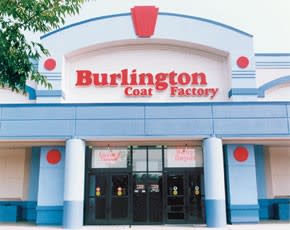
U.S. workforce diversity reported in 2020: 71 percent of associates self-identify as having a racial or ethnic minority background.
U.S. workforce diversity reported in 2021: Burlington has not provided updates or further breakdowns to representation reported last year.
U.S. workforce diversity reported in 2022: Burlington did not provide updated representation numbers but did say, “While Burlington’s 2021 CSR report has not yet been released [it will be released “later this summer”], it will certainly demonstrate that we are highly committed to making progress. Our 2020 CSR report shared that our commitment to a diverse associate base is strong with more than 75 percent of our associates self-identifying as people of color.”
Key 2020 commitment: “Our associates, customers and communities represent a widely diverse culture. This diversity makes the events of the past week that much more difficult for us all, as well as for me as a leader. As a member of the Burlington team, I’d like to reaffirm our commitment to embracing inclusivity, and being part of the struggle for fairness and equality for all.
…We don’t have all the answers. But we’re committed to work together, both within our company and within the broader community, to move our world closer to unity, understanding, and inclusivity,” said Michael O’Sullivan, Burlington’s CEO.
The progress: As Michael Allison, Burlington’s executive vice president & chief administrative officer told WWD, “Burlington continues to prioritize diversity, equity and inclusion within our company and the broader communities in which we live and work. The foundation laid in 2020 has led to the development and implementation of our Diversity, Equity, and Inclusion Strategic Plan. This strategic plan, fully integrated across the entire spectrum of business functions, is comprised of five key areas: Leadership & Workforce Diversity, Inclusive & Equitable Environments for Associates and Customers, Enhanced Education & Awareness, Vendor/Supplier Diversity, and Community Advocacy.
This plan positions Burlington for continued growth and success within an ever-shifting demographic, cultural and economic landscape.”
The claim: “Burlington has reimagined its commitment to diversity and inclusion through the onboarding of a senior vice president for Diversity and Inclusion, two vice presidents for Diversity and Inclusion and an expanded team to support the work in our field and stores, corporate, merchandising and distribution centers. This commitment also includes the creation of diversity councils and associate resource groups to further complement our efforts,” the company noted. “Additionally, we had invested $1 million to support the work of organizations who are dedicated to social justice advocacy and racial equality. Burlington seeks to continue to partner with organizations who are engaged in similar efforts, through continued partnership and collaboration.”
FOOT LOCKER
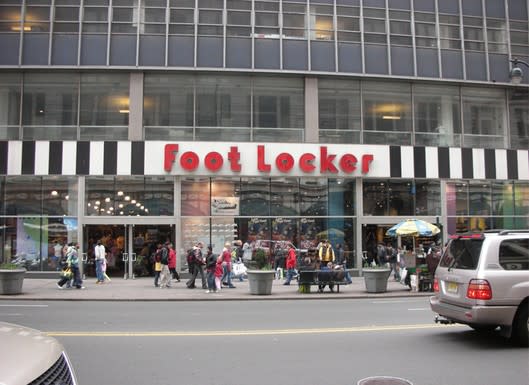
U.S. workforce diversity reported in 2020: 16 percent white, 84 percent “ethnically diverse”
U.S. workforce diversity reported in 2022: Foot Locker was not in the top 20 fashion companies in Brand Finance’s 2021 ranking, so it’s appearing on this WWD list for the first time this year. The company did not provide updated reference numbers, noting that those will be released with its fiscal year 2021 Impact Report in September. It did say as of fiscal year 2020, 85 percent of its North American team members are “diverse.”
Key 2020 commitment: “Black culture shapes sneaker culture.
The problems we face today are not new — and will not end without all of us committing to change. We stand with those who are working toward eliminating the deep racial inequities that exist today. We are committing $200 million over the next five years to economic development and education for our Black team members and communities. Black Lives Matter.”
The progress: Foot Locker said, along with nonprofit community development institution, it has created a $3 million, multicity initiative “to support nonprofit community organizations that empower youth in Black, Indigenous and people of color (BIPOC) communities. The program aims to bridge gaps driven by racial inequity and promote youth empowerment and community wellness — all while supporting community-based organizations led by people of color.”
In December, the company expanded its Community Empowerment Program to Europe and Canada in partnership with Laureus Sport for Good. “The program will invest $750,000 in organizations supporting underserved youth across Canada and Europe,” the company noted.
As part of its Leading in Education and Economic Development effort launched in 2020 and now in its second year, the company has been continuing to see through its five-year $200 million commitment to the Black community. In the first year, the company invested $35 million; $10 million was invested into Black-owned brands and creatives; it launched 45 new brand partnerships with Black brands and creators launching in its stores; and it invested in six Black-owned VC firms “advancing diversity in how venture funds are allocated.”
“On this journey we started out because it’s the right thing to do, but we have quickly learned as we are now at the end of year two, we’ve quickly learned that it’s also good business,” Foot Locker’s Walsh said. “When we talk about good business, I’ve got a few different examples that take me away. One is Pro Standard. Pro Standard is one of the fastest growing, hottest brands in our assortment and it’s Black-owned and it came through this process of LEED.”
The licensed gear brand, according to Walsh is the only brand “that has the license rights to all the major sporting leagues in the country.”
“We worked with [Pro Standard founder Mike Harris] last year as a LEED brand and we got some early results, that was with Champs, and then we scaled it to Foot Locker and then we scaled it nationally, then we put it in kids and then we went from clothing to hats, and then we worked with him to get the license to do the NFL. Because of our partnership he got the NFL rights and now we’re working with him to get global rights so we can sell the product in Europe and in Australia. So that’s one really, really great success story that I could include as one of the many examples that we have.”
The aim for LEED in year three, according to Walsh, is to “Continue to improve the programs that we have, the continuous improvement for us to continue to scale these programs globally. But then the other thing proving success is for our customers, our competitors and the public to know what LEED is — and not for the sake of Foot Locker — but for the sake of our ability to highlight all the great Black businesses and Black entrepreneurs that we work with, but also for us to have the opportunity to inspire the next generation.”
The claim: “The thing that I love so much is how much we just keep getting better with every day,” Walsh said. “When I say it’s so easy to make the pledge but it’s hard to do the work because you’ve just got to step out there and you’ve got to do it and we’re constantly getting better at what we do, we’re constantly improving it.”
Sign up for WWD's Newsletter. For the latest news, follow us on Twitter, Facebook, and Instagram.

